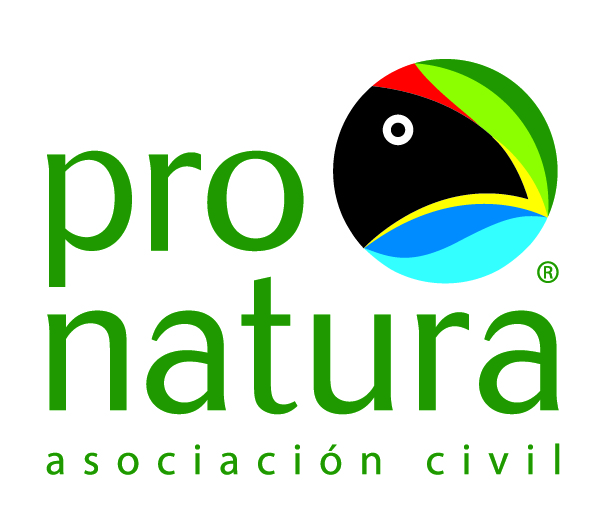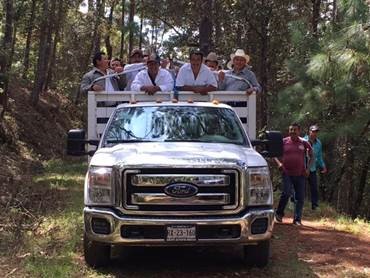



The San Juan Lachao forest project in Oaxaca, Mexico is near and dear to the hearts of Reserve staff members and others who worked on the project. It is a truly special example of how we can work together to address climate change and create real, lasting social, environmental and economic benefits for local communities. We’re very pleased to share the story of the project through the below perspectives from partners ICICO, ANCE and the City of Palo Alto, as well as the perspective from the Reserve.
Climate Action Reserve:
By John Nickerson
The Reserve would like to announce that, at long last, it has issued 17,063 CRTs (net of buffer pool) to San Juan Lachao, Oaxaca for two reporting periods. The project in San Juan Lachao began in 2014 and became our proving grounds to finalize the development of our Mexico Forest Protocol, the quantification and verification guidance documents, and our computer data management and reporting tools. This is a major milestone for our work with the Mexico Forest Protocol and it is breaking the trail for many more credits to follow. We began the work to create a Mexican Forest Protocol in 2010. We quickly encountered unique challenges in Mexico that we didn’t have in the United States, including the fact that most forest lands are communally owned and avoided emissions are managed at a jurisdictional level instead of the project level. Many additional challenges were confronted as we developed the protocol over a two-year timeframe with the assistance of many U.S. and Mexican stakeholders.
San Juan Lachao is an indigenous community in western Oaxaca. Many of the community members continue to speak Chatino, their local dialect. The economy is based largely on subsistence agriculture, with coffee and honey production, timber sales, and a little tourism providing additional economic resources. The San Juan Lachao Project is more than a committed effort to increase sequestration for climate mitigation. It has brought pride to the community. They know they are being talked about in other parts of Mexico. It has brought employment to the community as trained community members are responsible to manage the project inventory and will eventually handle other reporting aspects of the project. The project has been accompanied with biodiversity studies and has raised awareness within the community of the wildlife relationships associated with a well-managed forest. The forest carbon project will provide an economic incentive that will enable them to achieve a more productive forest in terms of timber production by rewarding them to maintain the best-growing trees in the short term.
We are grateful for the relationships that were created during the protocol development time that we continue to treasure today. We are grateful to the The Walt Disney Company, which provided funding to help support and develop the project. We only got the project off the ground due to the commitment, vision, and support of Carlos Perez, Teresa Tattersfield and their team at ICICO (Integradora de Comunidades Indigenas y Campesinas de Oaxaca – Carlos’ consulting firm) and for their forestry expertise, organizational, and capacity-development skills. We owe thanks to Leti Espinosa of Pronatura Mexico for building relationships and facilitating the agreement with Disney. We are grateful to the men and women of San Juan Lachao, who gave us a chance to test our protocol on their landscape, engaged directly in developing the inventory, and always welcomed us into their community with exceptional warmth, good food, and a bit of mezcal. We owe a debt of gratitude to Pedro Morales of White and Case. Pedro is our pro bono attorney that helped us sort through so many legal issues. We are grateful to the City of Palo Alto, who is working with the community to purchase the first issuance of credits. A huge thanks to Cecilia Simon and Amy Kessler to get to this milestone. Their perseverance and dedication to making the protocol function is why we got to this milestone.
ICICO:
ICICO, or the Integradora de Comunidades Indigenas y Campesinas de Oaxaca A.C., is a non-profit organization based in Oaxaca, which provides technical assistance to rural communities. ICICO was the Project Developer for the San Juan Lachao project.
La comunidad de San Juan Lachao Pueblo Nuevo, está marcando un precedente en la región, en estado, en país y en el ámbito internacional, no solo por ser la primera comunidad en realizar un proyecto forestal piloto utilizando el protocolo forestal para México de la Reserva de Acción Climática, por lo consiguiente la primera comunidad en realizar la venta de bono de carbono en el mercado voluntario internacional, contribuyendo de esta manera a la mitigación del cambio climático.
Cabe resaltar que este no es un esfuerzo aislado, es un esfuerzo conjunto entre los dueños del bosque, las organizaciones de la sociedad civil y la Ciudad de Palo Alto, quien en esta ocasión es la entidad que está comprando los bonos generados en el proyecto forestal de captura de carbono de la Comunidad.
En este sentido, queremos reconocer el papel importante que Disney ha jugado en este proyecto, así como a la Ciudad de Palo Alto por el esfuerzo en la adquisición de 17,000 toneladas de CO2 eq., a un precio justo, quisiéramos que municipios del país tomaran como ejemplo esta iniciativa y realizaran la neutralización de sus emisiones para estar a la vanguardia en el tema ambiental.
ANCE:
ANCE, or the Associacion Nacional de Normalizacion y Certifiacion, A.C., is a nonprofit entity in Mexico, which evaluates and certifies compliance with national and international standards and regulations. ANCE was the verification body for the pilot project of San Juan Lachao.
La participación de ANCE como organismo verificador del Protocolo Forestal para México de CAR surgió del interés que tiene la Asociación por atender varios aspectos en torno al manejo responsable de los recursos naturales en México; particularmente desde el área del manejo sustentable de los bosques.
A lo largo de 7 años ANCE ha sido el único organismo mexicano acreditado por la Entidad Mexicana de Acreditación (ema) para la certificación de la norma NMX-AA-143-SCFI-2015 (2008 hasta diciembre de 2015), la cual es uno de los esquemas con los que cuentan la SEMARNAT y la CONAFOR para evaluar el cumplimiento adecuado de las leyes y normas mexicanas que permitan el desarrollo forestal sustentable en el país.
La experiencia de estos años, cristalizada en la certificación de 183 predios forestales a lo largo de 11 Estados, se traduce en 1,060,478.11 ha bajo manejo sustentable, uno de ellos es la Comunidad de San Juan Lachao, Oaxaca.
Cuando nos invitaron al primer curso de capacitación sobre el Protocolo Forestal para México CAR que dio la Reserva en Ciudad de México, nos convencimos de las ventajas que representaría tener proyectos con un esquema reconocido internacionalmente, con garantía de estar verificando una captura de CO2 real, transparente, con salvaguardas sociales y ambientales adecuadas a la legislación mexicana y teniendo en primer lugar el desarrollo de las comunidades rurales. De esta manera, el involucrarnos con la verificación del Proyecto de San Juan Lachao, hemos recorrido un camino de mejora continua en la aplicación y verificación del Protocolo Forestal para México, desde su versión 1.2 hasta la reciente versión 1.5, lo que nos ha permitido conocer los aspectos técnicos, sociales y ambientales que implica el desarrollo de un proyecto como este, el cual es pionero en México.
A partir de la experiencia con la verificación del proyecto de San Juan Lachao también hemos podido sugerir la participación de algunos predios certificados con la norma mexicana, invitando a productores y Técnicos en los estados de Puebla, Hidalgo, México, Durango, Jalisco y Michoacán, así como a las delegaciones estatales de CONAFOR, PROBOSQUE y a la industria mexicana a conocer el protocolo CAR con la esperanza de que más proyectos se sumen para tener una red bien establecida de proyectos forestales de mitigación del cambio climático previo al inicio oficial del Mercado Voluntario de Carbono en México.
Puntualizando, tenemos un gran ejemplo en la comunidad chatina de San Juan Lachao, Oaxaca; dignos representantes de las comunidades campesinas mexicanas, que a pesar de ser consideradas las más rezagadas del país, pueden darnos sorpresas gratas con ejemplos de innovación y compromiso con sus recursos naturales y su comunidad siendo pioneros en el manejo sustentable y conservación de los bosques.
Ojalá que el proyecto de San Juan Lachao sirva como referencia fidedigna para que muchas comunidades más se unan a este esfuerzo.
Palo Alto:
By the City of Palo Alto
On Monday, December 4, the City Council will consider a resolution approving an agreement to purchase “carbon offsets” to help Palo Alto maintain its net zero carbon footprint. The City has been working with its sister city, Oaxaca, Mexico on various sustainability issues and during that process learned about a forestry project that produces high-quality carbon offsets managed by the Integrative Organization of Oaxaca Indigenous and Agricultural Communities (ICICO). Carbon offsets are a form of trade to fund projects that reduce greenhouse gas (GHG) emissions. In this case, carbon offsets are generated through monitored and verified increases to forest stock that result in carbon being sequestered in trees rather than released to the atmosphere.
The City will purchase 17,000 tons of carbon offsets from ICICO. Palo Alto’s $136,000 investment is supporting conservation and restoration activities within 5,900 acres of native forest and will neutralize about 10 percent of the City’s annual emissions from natural gas use. The remaining offsets will be purchased from projects here in the U.S.
Revenue from the sale of carbon offsets through ICICO’s program also provides multiple co-benefits for the Oaxacan community including fire protection, tree care, fresh water spring recharge, and transportation and equipment for local schools.
Palo Alto has been providing 100 percent carbon neutral electricity since 2013. In July, the City also began offsetting 100 percent of its natural gas carbon omissions through carbon reduction projects like this one in Mexico. You can learn more about that here.
The “carbon offsets” generated by the Oaxaca forestry project are similar to those contemplated by the Carbon Neutral Natural Gas Plan that was adopted by the City in 2016. The Mexican forestry project protocol was developed by Climate Action Reserve, one of the largest offset registries in North America that is used by the California Air Resources Board. You can read the full staff report here to learn more.
Tags: Natural & Working Lands, including Forests, offsets, Reserve program & staff










